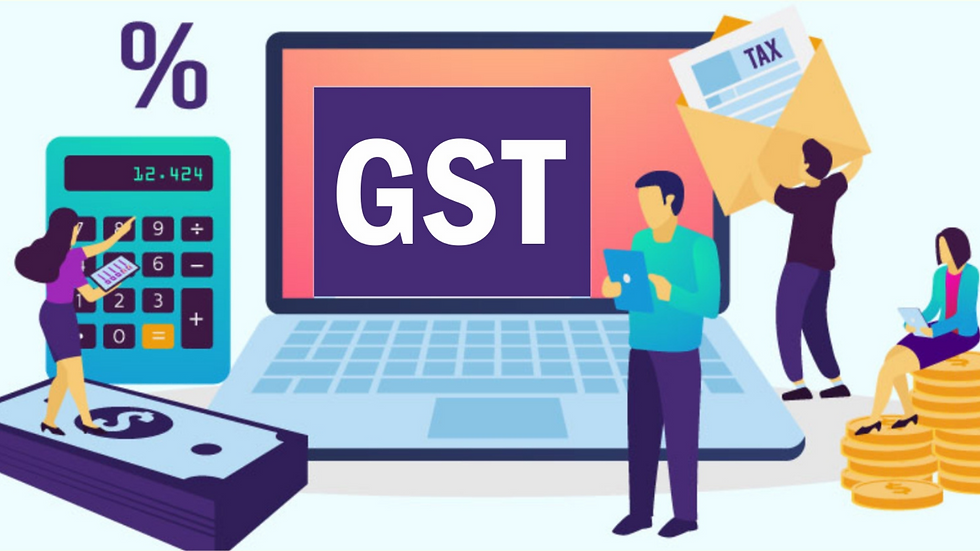What is the Full Form of GST?
- Priyanka Sharma
- Dec 12, 2024
- 3 min read

Understanding the GST Full Form
The GST full form stands for Goods and Services Tax. It is a comprehensive indirect tax levied on the manufacture, sale, and consumption of goods as well as services. GST is designed to be a unified tax system that simplifies and replaces various indirect taxes that existed previously, creating a more efficient taxation environment.
The Evolution and Implementation of GST
Before delving into the specifics of the GST full form, it is crucial to understand its context and the necessity for such a tax system. Historically, the Indian taxation system was convoluted, comprising multiple taxes at both the central and state levels. These included VAT (Value Added Tax), service tax, excise duty, and many others, leading to a tax-on-tax or cascading effect, which was often a burden on consumers and businesses. The idea behind GST was to eradicate these cascading taxes and establish a single, streamlined tax system that would be applicable nationwide.
The GST regime was officially implemented in India on July 1, 2017. This landmark reform was touted as the biggest indirect tax overhaul since the country’s independence. The GST Council, which governs the rules and rates of GST, is the administrative body responsible for this transformative tax policy.
GST Structure: CGST, SGST, and IGST
The structure of GST is meticulously designed to ensure seamless tax administration across the country. It comprises three main types of GST:
CGST (Central Goods and Services Tax): This component is levied by the central government on intra-state supplies of goods and services.
SGST (State Goods and Services Tax): This is levied by state governments on intra-state supplies. Both CGST and SGST are applicable to supplies within the same state.
IGST (Integrated Goods and Services Tax): This is collected by the central government for inter-state supplies of goods and services as well as exports or imports.
This trifurcated structure helps both the central and state governments share the revenue garnered from GST, ensuring a balanced and fair distribution of resources.
Benefits of GST
The introduction of GST has brought numerous benefits to the economy, businesses, and consumers alike. Here are some key advantages:
Elimination of Cascading Effect: GST has successfully eliminated the cascading effect of taxes, which means that tax is now only paid on the value added at each stage of production or distribution.
Simplified Tax Structure: With GST, the complexity of multiple taxes has been replaced with a simple, unified tax system. This reduction in complexity has made it easier for businesses to comply with tax regulations.
Boost to Revenue: GST helps in widening the tax base and improving tax compliance, which boosts overall government revenues. It reduces tax evasion and ensures a more transparent and accountable tax system.
Reduction in Tax Burden on Consumers: A simplified tax structure leads to lower production costs and, ultimately, lower prices for consumers.
Enhanced Ease of Doing Business: With a unified tax system, businesses find it easier to operate across states, encouraging interstate commerce and investment.
Implementation Challenges and Solutions
Despite its numerous benefits, the rollout of GST faced several challenges. Some of the initial issues included technology-related teething troubles, compliance burdens for small businesses, and the need for extensive training and acclimatization.
To address these, the government and the GST Council have been proactive in adjusting rates, simplifying filing procedures, and providing ongoing support and education to businesses. The introduction of the simplified returns system and the continuous enhancement of the GSTN (Goods and Services Tax Network) infrastructure have played a crucial role in smoothing out early hiccups.
Effortless GST Management with the Bajaj Finserv App
The Bajaj Finserv App is a comprehensive financial tool that simplifies managing various financial services, including GST-related tasks. GST, or Goods and Services Tax, is a significant indirect tax levied on the supply of goods and services in India. Through the Bajaj Finserv App, users can easily access resources to understand, calculate, and track their GST liabilities. The app also offers features like GST filing assistance, invoice management, and tax calculations, making it an essential tool for business owners and individuals dealing with GST. With its user-friendly interface and seamless integration, the app ensures a hassle-free experience for GST management.
Conclusion
GST, or Goods and Services Tax, represents a monumental reform in the Indian taxation landscape. The GST full form is now synonymous with a simplified, unified tax system that promises greater efficiency, transparency, and fairness. By replacing a plethora of indirect taxes, GST has not only made taxation more straightforward but has also fostered a more conducive environment for businesses and consumers alike. Through its structured approach and continued refinement, GST stands to benefit the Indian economy significantly in the years to come.



Comments